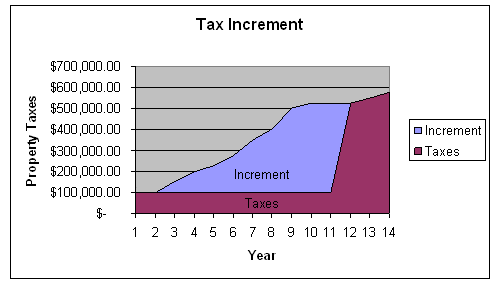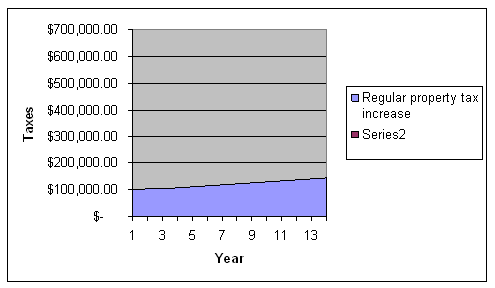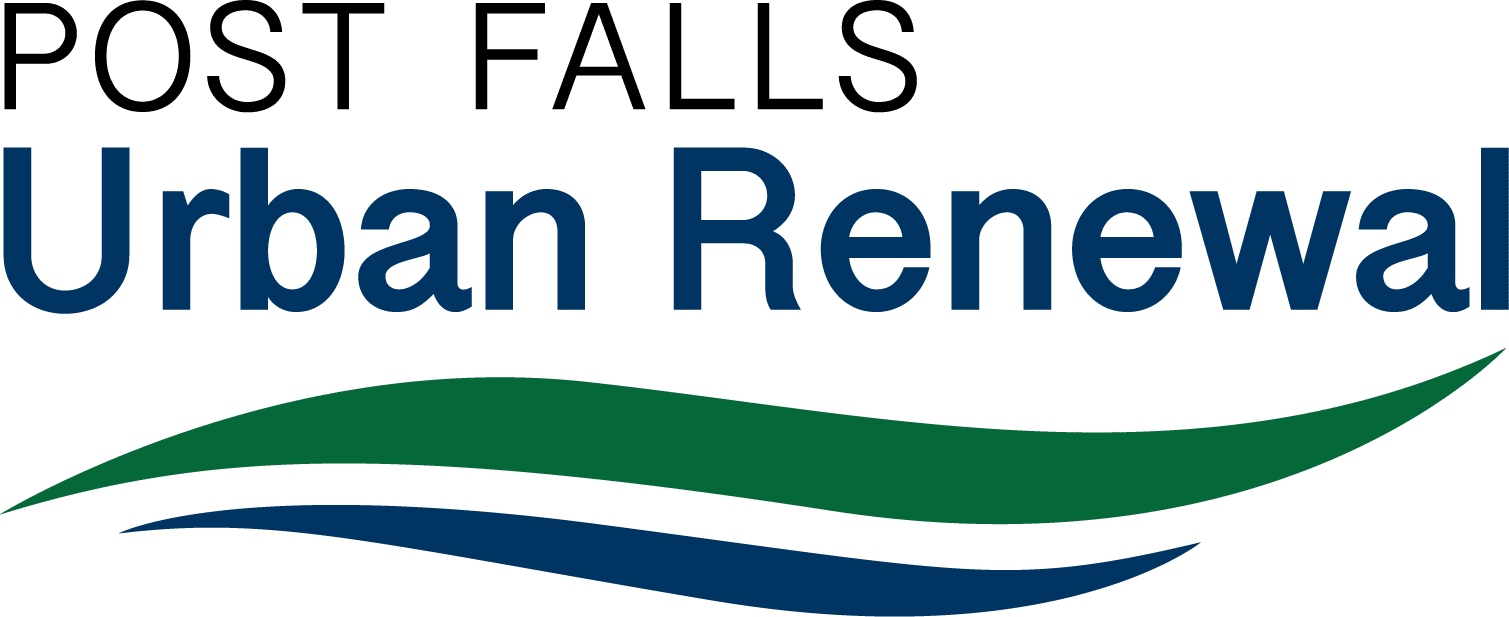HOW TIF WORKS
What is TIF?
TIF is an acronym for Tax Increment Financing.
What is Tax Increment Financing?
Created by State and Federal statute, Tax Increment Financing is the best tool that communities have for working with employers to bring jobs in. By partnering to create infrastructure that cities need to bring employers in, communities such as Post Falls have a competitive edge in bringing good, high-paying jobs for our residents.
When an urban renewal district is put into place, property tax revenues begin to be separated into two groups: The Base and The Increment.
The Base is the money that is collected based on the value of properties within the boundaries of the urban renewal district at the time the district is formed.
The Increment is any increase in revenues based on increased property values within the urban renewal district from the time the district is created until it is closed. The increment is then used to reimburse a developer or other proponent for building and creating public infrastructure that is adopted by the city.
After the district closes, the increased revenues are returned to the underlying taxing entities and the taxpayer. The following diagram shows how revenues would flow through the life of a 10-year district:

Tax increment financing does two important things.
- First of all, by partnering with private entities to provide critical infrastructure, Post Falls is able to create many jobs, nearly 3,000 so far, in our districts.
- Secondly, the growth we spur through tax increment financing increases the dollars that are available for regular taxing entities after the district closes, such as Kootenai County Fire and Rescue, Kootenai County, The City of Post Falls, The Post Falls School District and more.
All of these agencies benefit directly from urban renewal. Looking at the above graph, the dark purple represents money that funds regular taxing entities. After year 10 (or whatever the life of the district may be), most of the increased revenue flows back to the taxing districts. These funds open up an option for decreased levy rates and subsequent tax burden when a district closes.
Many areas where TIF is used will see no major development for many years without this vital tool. The following graph shows how increased revenues would look for taxing districts without TIF:

